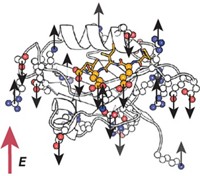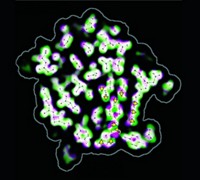Advertisement
Grab your lab coat. Let's get started
Welcome!
Welcome!
Create an account below to get 6 C&EN articles per month, receive newsletters and more - all free.
It seems this is your first time logging in online. Please enter the following information to continue.
As an ACS member you automatically get access to this site. All we need is few more details to create your reading experience.
Not you? Sign in with a different account.
Not you? Sign in with a different account.
ERROR 1
ERROR 1
ERROR 2
ERROR 2
ERROR 2
ERROR 2
ERROR 2
Password and Confirm password must match.
If you have an ACS member number, please enter it here so we can link this account to your membership. (optional)
ERROR 2
ACS values your privacy. By submitting your information, you are gaining access to C&EN and subscribing to our weekly newsletter. We use the information you provide to make your reading experience better, and we will never sell your data to third party members.
Analytical Chemistry
Rhodopsin Shifts Are Caught in Act
Ultrafast Raman technique provides new insight into isomerization of retinal
by Celia Henry
November 14, 2005
| A version of this story appeared in
Volume 83, Issue 46

Biochemistry
A new, ultrafast raman spectroscopy method has given researchers a glimpse of the early stages of the vision process.
Vision is jump-started by the isomerization of the retinal chromophore in rhodopsin from the 11-cis to the all-trans configuration. In this conversion, the primary ground-state intermediate is formed within 200 femtoseconds of a photon striking. The photochemical reaction is one of the fastest in nature and was too quick to get a structural picture of what's happening—until now.
Using a technique called femtosecond-stimulated Raman spectroscopy, chemistry professor Richard A. Mathies, grad students Philipp Kukura and David W. McCamant, and coworkers at the University of California, Berkeley, have obtained new structural information from vibrational spectra taken between 200 fs and 2 picoseconds at 50-fs resolution (Science 2005, 310, 1006).
They find that most of the rearrangement from the 11-cis rhodopsin to the all-trans bathorhodopsin happens in the electronic ground state, whereas it was previously assumed to occur in the excited state.

The standard picture for an isomerization reaction is that the molecule just rotates around the double bond, Mathies says. But that route doesn't work in a protein like rhodopsin because there isn't enough room or enough time inside a protein for such a fast reaction. In 50 femtoseconds, you just don't have time to move along a torsional mode.
Nature solves that problem by using a type of molecular motion called hydrogen-out-of-plane (HOOP) wagging. This pyramidalization movement distorts the skeletal structure and allows the system to convert from the excited state to the ground state rapidly, producing a formally isomerized product by 200 fs, Mathies says. Despite the isomerization, extensive twisting keeps the overall shapes of the intermediate and the all-trans product remarkably like that of the original chromophore.
The conclusions are based on the behavior of the vibrational bands in the spectra. Mathies expected the bands simply to shift as a function of time. In addition, they exhibit dispersive line shapes, which have both positive and negative components. The line shapes are the result of the vibrational motion changing during the measurement, and they directly report the structural relaxation of retinal from the high-energy photorhodopsin intermediate to the bathorhodopsin product.
In an accompanying commentary, physicist Paul M. Champion of Northeastern University, Boston, writes that the discovery of the role of the HOOP motions represents a paradigm shift from the usual description of retinal isomerization reactions, in which the electronic and nuclear structures are assumed to evolve together.
Next, Mathies and his coworkers intend to turn to the interaction of the protein and the chromophore. Now that we can study the structure of the chromophore with this high time resolution, we can modify the environment of the protein and figure out what residues the chromophore is interacting with, he says.
He also wants to use the technique to study other photochemical systems. In all areas where you have light energy or light information transduction, these technologies are going to be critical for understanding how it works.






Join the conversation
Contact the reporter
Submit a Letter to the Editor for publication
Engage with us on Twitter